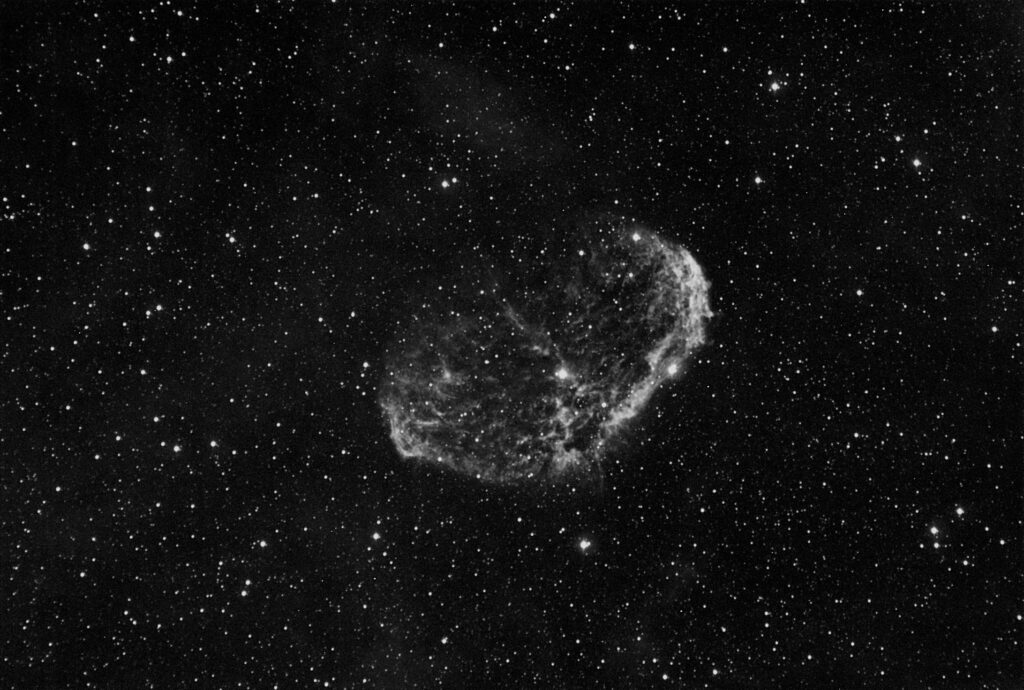Imagine flipping a coin once each second for 24 hours every day, 7 days a week. And them imagine that for the entire first day your 86,400 flips come up "heads" every time! Then, imagine that you continue flipping the coin 24 hours every day for 12 years, and that every time it comes up heads (1 million times)! How likely would this be? About as likely as locating a Wolf-Rayet star. Only 227 of these extraordinary stars have been detected in the entire universe (10^22 stars), and in this image of the Crescent Nebula you are looking at one of them. It is the bright star in the "center" of the nebula, and is known as WR136. The star is directly associated with the nebula surrounding it.
Wolf-Rayet stars are giant stars that are rapidly losing their mass through fusion reactions and strong "stellar wind." The wind is emanating from the star at a prodigious speed (up to 5 million miles per hour), producing a "shock wave" that slams into the diffuse hydrogen gas surrounding the star and causes it to glow. As the shock wave passes through this medium, the nebula eventually will dim. The entire nebula is some 25 light years (150,000,000,000,000 miles) across, and its apparent size in the sky is 20 arcminutes, or about two-thirds the size of a full Moon. It is too dim to see, however, with the naked eye.
The Crescent Nebula in Cygnus
Date Taken:August 6, 2004
Location Taken: Conditions of Location:FWHM 2.88
Equipment Used:Takahashi TOA-130 5" apochromatic refractor telescope, SBIG ST-10XME CCD camera, Optec TCF-S focuser, Astrodon RGB filters.
Processing Used:6x300 second guided images combined in Maxim and processed in Photoshop (curves and levels).
Distance from Location:4,700 years
Constellation:Cygnus
Other Link:
